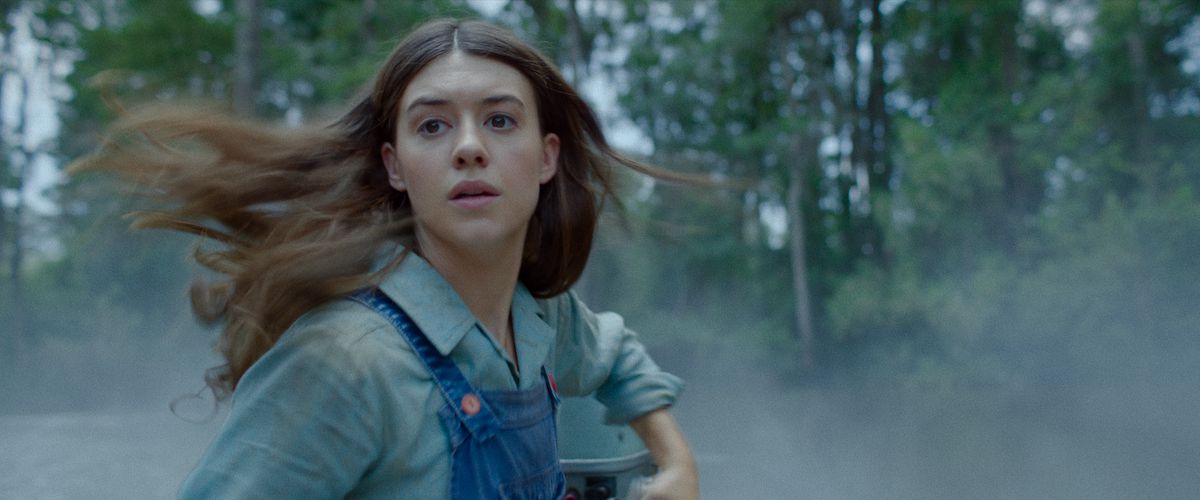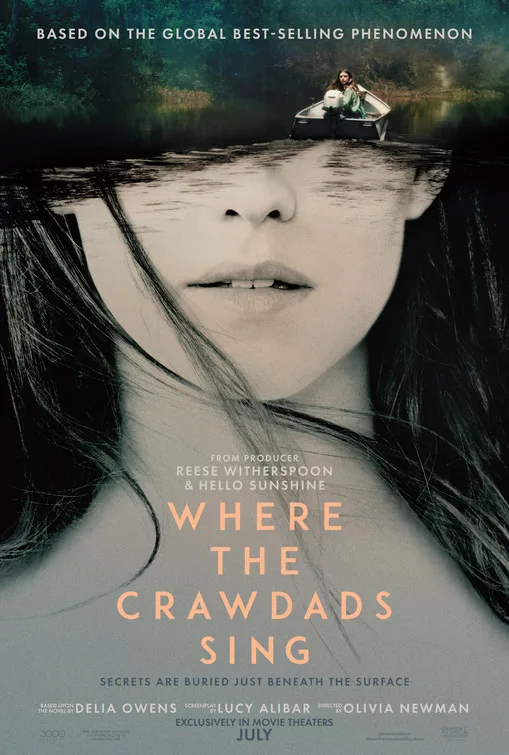The cicadas buzz and the moss drips and the sunset casts a golden shimmer on the water every single evening. But while “Where the Crawdads Sing” is rich in atmosphere, it’s sorely lacking in actual substance or suspense.
Maybe it was an impossible task, taking the best-selling source material and turning it into a cinematic experience that would please both devotees and newbies alike. Delia Owens’ novel became a phenomenon in part as a Reese Witherspoon book club selection; Witherspoon is a producer on “Where the Crawdads Sing,” and Taylor Swift wrote and performs the theme song, adding to the expectation surrounding the film’s arrival.
But the result of its pulpy premise is a movie that’s surprisingly inert. Director Olivia Newman, working from a script by Lucy Alibar, jumps back and forth without much momentum between a young woman’s murder trial and the recollections of her rough-and-tumble childhood in 1950s and ‘60s North Carolina. (Alibar also wrote “Beasts of the Southern Wild,” which “Where the Crawdads Sing” resembles somewhat as a story of a resourceful little girl’s survival within a squalid, swampy setting.)
It is so loaded with plot that it ends up feeling superficial, rendering major revelations as rushed afterthoughts. For a film about a brave woman who’s grown up in the wild, living by her own rules, “Where the Crawdads Sing” is unusually tepid and restrained. And aside from Daisy Edgar-Jones’ multi-layered performance as its central figure, the characters never evolve beyond a basic trait or two.
We begin in October 1969 in the marshes of fictional Barkley Cove, North Carolina, where a couple of boys stumble upon a dead body lying in the muck. It turns out to be Chase Andrews, a popular big fish in this insular small pond. And Edgar-Jones’ Kya, with whom he’d once had an unlikely romantic entanglement, becomes the prime suspect. She’s an easy target, having long been ostracized and vilified as The Marsh Girl—or when townsfolk are feeling particularly derisive toward her, That Marsh Girl. Flashbacks reveal the abuse she and her family suffered at the hands of her volatile, alcoholic father (Garret Dillahunt, harrowing in just a few scenes), and the subsequent abandonment she endured as everyone left her, one by one, to fend for herself—starting with her mother. These vivid, early sections are the most emotionally powerful, with Jojo Regina giving an impressive, demanding performance in her first major film role as eight-year-old Kya.
As she grows into her teens and early 20s and Edgar-Jones takes over, two very different young men shape her formative years. There’s the too-good-to-be-true Tate (Taylor John Smith), a childhood friend who teaches her to read and write and becomes her first love. (“There was something about that boy that eased the tautness in my chest,” Kya narrates, one of many clunky examples of transferring Owens’ words from page to screen.) And later, there’s the arrogant and bullying Chase (Harris Dickinson), who’s obviously bad news from the start, something the reclusive Kya is unable to recognize.
But what she lacks in emotional maturity, she makes up for in curiosity about the natural world around her, and she becomes a gifted artist and autodidact. Edgar-Jones embodies Kya’s raw impulses while also subtly registering her apprehension and mistrust. Pretty much everyone lets her down and underestimates her, except for the kindly Black couple who run the local convenience store and serve as makeshift parents (Sterling Macer Jr. and Michael Hyatt, bringing much-needed warmth, even though there’s not much to their characters). David Strathairn gets the least to work with in one of the film’s most crucial roles as Kya’s attorney: a sympathetic, Atticus Finch type who comes out of retirement to represent her.
This becomes especially obvious in the film’s courtroom scenes, which are universally perfunctory and offer only the blandest cliches and expected dramatic beats. Every time “Where the Crawdads Sing” cuts back to Kya’s murder trial—which happens seemingly out of nowhere, with no discernible rhythm or reason—the pacing drags and you’ll wish you were back in the sun-dappled marshes, investigating its many creatures. (Polly Morgan provides the pleasing cinematography.)
What actually ends up happening here, though, is such a terrible twist—and it all plays out in such dizzyingly speedy fashion—that it’s unintentionally laughable. You get the sensation that everyone involved felt the need to cram it all in, yet still maintain a manageable running time. If you’ve read the book, you know what happened to Chase Andrews; if you haven’t, I wouldn’t dream of spoiling it here. But I will say I had a variety of far more intriguing conclusions swirling around in my head in the car ride home, and you probably will, too.
Now playing in theaters.




















